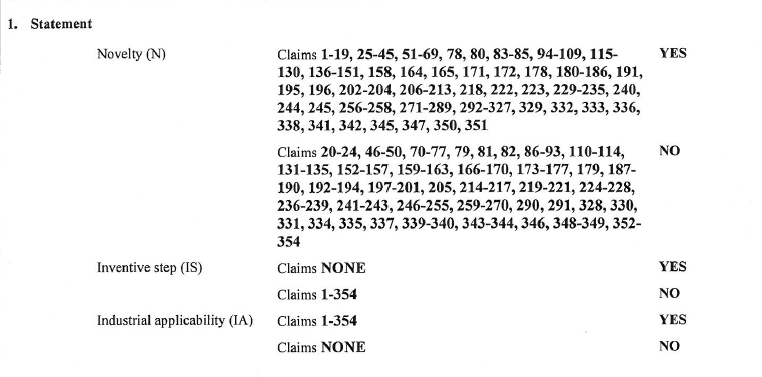Australian orthopaedics technology company and client of Baxter IP, Optimized Ortho, acquired by UK-based Corin Group

Baxter IP client, Optimized Ortho, an Australian-owned orthopaedics technology company has recently been acquired by UK-based Corin Group PLC to launch its innovative software-based platform that provides kinematic optimisation of total hip replacements. The platform allows surgeons to tailor their surgery by customizing implants and their positioning based on patient post-surgery needs and the patient’s individual biomechanics.
The acquisition provides Corin with an IP-protected technology that is the first of its kind within the orthopaedic field. The combination of the Optimized Positioning System (OPS™) technology, alongside the company’s strong hip portfolio and rapidly expanding global distribution network, provide a strong foundation for future growth of the company. Source, 25 November 2014
Patient specific orthopaedic surgery now a reality
Patient-specific pelvic rotations change the functional orientation of the acetabulum during different movements and activities. It is therefore important that acetabular component orientation in total hip replacement should incorporate a pre-operative analysis in terms of the individual’s biomechanics and preferred kinematic outcomes. In other words, total hip replacements should be patient-specific. Trinity OPS™ as the technology is now known, addresses these issues by providing a dynamic, functional and patient-specific pre-operative simulation. The simulation involves simulating the kinematic relationship between their spine, pelvis and femur across a range of daily activities. During surgery, a laser guided, patient-specific delivery system is then used to orient the acetabular cup.
Supported by a strong intellectual property foundation
From early 2011, Baxter IP worked closely with the Managing Director of Optimized Ortho, Bede O’Connor, and Chief Technology Officer, Brad Miles, to establish a robust intellectual property position which was captured by a series of Australian provisional patent applications followed up by a PCT International patent application. The PCT patent application covers a range of orthopaedic technology covering software platforms, medical devices and total system integration, specifically, a computer implemented method, computing device and computer readable storage medium for providing alignment information data for the alignment of an orthopaedic implant for a joint of a patient.
A PCT International patent application can achieve multiple legal and commercial outcomes. From a legal perspective, it allows the Patent Applicant to:
- Maintain the original filing date of the priority application which was, in this case, a series of provisional patent applications.
- Allow examination objections to be dealt with centrally, rather than in each office during national phase. This avoids the Applicant having to respond to similar examination reports before multiple patent offices in parallel and therefore saves money. Furthermore, this also allows the application to progress to grant more quickly.
- Obtain a clear Written Opinion during the PCT International Phase. This generally allows for a more expedited acceptance or allowance process in each country during the national phase.
- In obtaining a clear Written Opinion the scope of legal patent coverage as defined in the claims is also established with a greater degree of confidence.
- The PCT Patent Prosecution Highway (PPH) can be used to allow an expedited examination process during national phase.
From a commercial perspective:
- A clear Written Opinion creates an initial level of confidence with potential investors or partners around the scope of patent protection available for a particular invention and therefore its value.
- Maintains the Applicant’s right to pursue patent protection in any one of the 148 PCT contracting states (i.e. all major countries around the world with the exception of Taiwan) up until 30-31 months from the priority date (original filing date for the invention).
We successfully overcame examination obstacles
Once a PCT International Patent Application has been filed, a Written Opinion of the PCT International Searching Authority issues automatically. It is normal for such Written Opinions to contend the novelty or at least the inventive step of the claimed invention. In this particular case, the PCT International Patent Application initially faced objections on the basis of lack of inventive step. This is what the First Written Opinion cited:

We were able to circumvent the objections by filing a Demand for International Preliminary Examination along with arguments and claim amendments. The final result was a clear International Report on Patentability:

Pursing geographical patent coverage during the national phase
Upon achieving a clear International Preliminary Examination Report, Optimized Ortho decided to enter the national phase in various countries around the world including Europe and USA.
The strategy we recommended was to obtain acceptance in the USA first, a jurisdiction where examination is quite stringent, which would then assist Optimized Ortho in achieving acceptance in other countries. We were able to achieve expedited acceptance of the US patent application within 12 months by using the PCT patent prosecution highway, saving our client time and money and their application is now proceeding in other jurisdictions.
Sophisticated cross-functional approach required to achieve optimiz(s)ed IP outcomes
To achieve the best result with IP, as was the case with Optimized Ortho, a sophisticated approach where the patent attorney, technological or subject matter experts are in open and detailed dialogue with the team responsible for commercialisation is required. This dialogue guides decisions as to what types of patent applications to file, patent examination strategy and where to file, amongst many other considerations. Where the commercial decision makers have a detailed grasp on patent strategy and the commercial implications of each step of the patent process, they can proceed with commercial negotiations more confidently. Finally, by close consultation with the inventors or technology experts, the level of patent coverage achieved can be optimised and made as watertight as possible.
Following the success of Trinity OPS™ in Australia over the past year, Corin is now rolling out the system globally.
